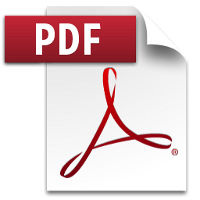ANNEXURE B: EXAMPLES OF FIRE HAZARDS AT MINES
(For information purposes)
| 1. |
The following is a list of typical fire hazards that could be considered for addition in the list of fire hazards of COP. The list is intended as an aide-memoire and it is not exhaustive. |
| 1.1.1. |
Fixed mechanical equipment or plant using mechanical friction such as mono-winches and associated winch rope systems, conveyor belt drives and pulleys. |
| 1.1.2. |
Fixed electrical equipment: electrical short circuits or over heating of oil-filled transformers or switch-gear; (particularly where these are located in main intake airway systems). |
| 1.1.3. |
Mobile equipment: fuel or oil leaks on hot exhaust manifolds or the surface of a turbocharger. |
| 1.1.4. |
Re-fuelling bays and battery charging bays. |
| 1.1.5. |
Underground workshop areas (storage of fuels, grease, oils, paint, tyres, hoses) in the presence of mobile equipment and also where extensive hot work is performed. |
| 1.1.6. |
Combustible and flammable liquid stores. |
| 1.1.7. |
Explosives storage areas. |
| 1.1.8. |
Locations where combustible of flammable dust or gases can accumulate. |
| 1.1.9. |
Flame cutting and welding operations, particularly near combustible material. |
| 1.1.10. |
Abandoned panels or work-places: spontaneous ignition of support timber or coal. |
| 1.2.1. |
Major transformer stations and electrical switchgear installations in or next to hoist rooms. |
| 1.2.2. |
Storage installations for fuel or other flammable chemicals. |
| 1.2.3. |
Overland conveyor belts. |
| 1.2.4. |
Coal stockpiles or spoil piles (induced fires or self-ignition). |
| 1.2.5. |
Explosives magazines. |
| 1.2.6. |
Smelter granulation or casting process areas. |
| 1.2.7. |
Ammonia refrigeration plants. |
| 1.2.8. |
Waste storage or disposal areas. |
| 1.2.9. |
Natural or agricultural areas near, plant/surface infrastructure, intake shafts or declines (plant material fires). |
 National Road Traffic Act, 1996
National Road Traffic Act, 1996